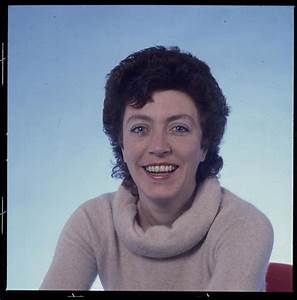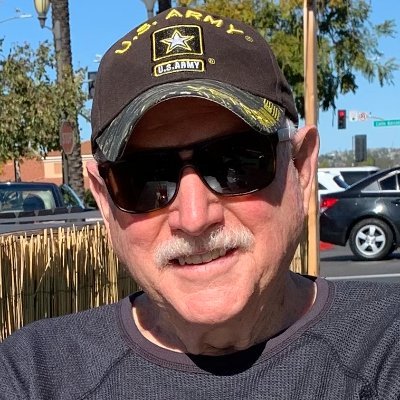The other day I was thinking about some of the most interesting people I met and worked with during a 27-year-career as a reporter and foreign correspondent with the Chicago Tribune.
One of the first names that popped into my head was Anne Keegan, a one-of-a-kind reporter, and columnist for the Tribune. Anne and I worked together for several years before I was posted to Tokyo as the Tribune’s Far East Correspondent.
She was a true original. When she passed away at 68 10 years ago, after a lingering illness, it was still a shock. That same day I posted about Anne on my blog.
Since then, the Chicago Headline Club has created the Anne Keegan Award for distinguished journalism about ordinary people in extraordinarily well-reported and well-written prose–an Anne Keegan specialty.
Some of you may not have seen it, so I thought I would post it again. At the end of my post is a short YouTube video produced by Anne’s husband, Len Aronson. Take a look. I think you will enjoy it.
Thursday, May 19, 2011
Anne Keegan: An Original Lost to the Ages
Today I learned that Anne Keegan, a friend and colleague from my days with the Chicago Tribune, passed away. What a loss to Chicago journalism.
How can I describe Anne Keegan? She was a walking, talking paradox. She could be tough, with an ability to display, at a moment’s notice, the vocabulary of an angry truck driver or Marine drill sergeant. But she could also be sensitive and pliable, almost nun-like in the deep-felt emotions she (occasionally) wore on her sleeve.
She was what some people call a jelly bean. Hard on the outside, soft on the inside.
It was those qualities that made Anne Keegan a first-rate reporter and a great writer. In fact, she was one of the greatest writers I ever had the pleasure of working with at the Chicago Tribune–which once upon a time, was a truly great newspaper.
The 1970s and 1980s were Anne Keegan’s prime years at the Tribune–though they could have stretched on into the 1990s and even 2000s had the paper’s editors made an effort to understand her and find a way to use her enormous and unique talent. As it was, Anne left the paper the same year I did (1997) when it became clear that the Tribune had long ceased to be a writers’ paper in favor of one that encouraged predictable and formulaic journalism that made the bean counters and stockholders happy at the expense of originality.
During the 1970s and 1980s, Anne was given a front-page column at the Tribune–testimony to her talent at storytelling, which at its heart is what great journalism is all about. I first learned of Anne’s wonderful talents when I was working as the paper’s weekend city editor under managing editor Bill Jones.
Jones had an eye for talent and he knew how to encourage it and nurture it. Later editors at the Tribune seemed mystified by anybody who was the least bit iconoclastic, which is what Anne definitely was. Jones was not afraid of iconoclasts.
On Saturdays and Sundays when the paper was essentially in my hands I was blessed to have a group of reporters on the City Desk who were some of the best to ever wield a notebook and pen in Chicago. There was Mike Sneed, now a successful columnist at the Sun-Times. There was Jack Fuller, who went on to become the Tribune’s editor and then president and CEO of the Chicago Tribune. There was Bill Gaines, who would go to win two Pulitzer Prizes for investigative reporting. And there was Anne Keegan.
My job was easy. I would come in on Saturday morning and announce that we needed a good local story for the front page of the Sunday paper. After everyone had finished their coffee and read through the Sun-Times, Chicago Daily News, and Chicago Today (in those days there were four competing dailies in Chicago–not to mention City News Bureau and the Chicago Defender), I would simply say: “Go find me a good reader for the front page.”
Keegan and Sneed would be out the door in flash. And invariably, one of them would return with just what was needed.
I recall once when Keegan was on assignment to do a story on truckers who were angry about something–it may have been the 55 mph speed limit imposed during the first oil crisis in 1973. She called the office from a payphone at a truck stop to dictate a story. After she had finished one of the truckers she was writing about grabbed the phone and asked:

“What kind of girl reporters does the Tribune have? This one can out-swear all us!”
Then, I heard Keegan’s unmistakable voice in the background: “Don’t call me a girl, you asshole!”
I laughed out loud. That was Anne Keegan, alright. She could hold her own with any potty-mouthed truck driver.
The story she wrote belied her skills with Anglo-Saxon expletives. It was fair, provided context, and was even, by Keegan’s tough standards, a little sympathetic.
In the mid-1970s I was posted to Tokyo as the Tribune’s Far East Correspondent and Anne and I never really worked together again.
However, I followed her career and she followed mine. A few times Anne came to Asia to write stories about a range of topics such as S.E. Asian refugees.
Invariably, as she did in Chicago, Anne would unearth characters who found their nirvana in places like Bangkok.
Her stories about some of these people were wonderful studies of the human condition and spirit–people such as A. J. “Tiger” Rydberg, a gruff, rough, and tumble construction worker who built airstrips all over South Vietnam during the war.
In the 1970s and early 1980s, Rydberg operated a watering hole in Bangkok called the “Tiger’s Den” for former CIA Air America pilots, offshore oil riggers, itinerant hacks, and various and sundry soldiers of fortune. Anne discovered “Tiger” and told me about him.
“Look him up, Yatsie,” she said. (She always called me Yatsie, never Ron). “You’ll like him.”
I did look him up and she was right, I did like him.
“You work with Anne Keegan?” Rydberg asked me when I introduced myself to him in his Tiger’s Den. “What a broad! She can out-cuss me and I thought I knew every swearword in the English language.”
She also did a wonderful story on a Chicago priest, Father Raymond Brennan, who operated an orphanage for Thai children in the Thai coastal city of Pattaya, some 120 miles southeast of Bangkok. Her powerful story, along with Tribune photographer Val Mazzenga’s riveting photographs, resulted in an avalanche of donations for the orphanage that housed about 150 homeless children.
After Anne left the Tribune she continued to write. In 2007 she published “On the Street Doing Life,” a book about former Chicago cop Mike Cronin who spent years working on Chicago’s rough, gang-infested West Side. It is a gritty story about a cop walking a fine line between toughness and fairness. Eventually, Cronin rose through the ranks to head two of the Chicago Police Department’s top units: Narcotics and Gangs. Cronin did all of this despite the fact that he lost a leg in Vietnam and had to convince the Chicago Police Department to hire him despite his disability.
Anne also wrote a children’s book called “A Cat for Claire” that, at first glance seems like a significant departure from the kinds of stories she was famous for. In fact, however, that book displays Anne’s “soft” side–a side of her character that she was very careful about sharing. In this case, the book was written for her granddaughter.
Another side of Anne Keegan’s disposition was her almost total lack of ego–a rarity in newsrooms then and now. She never boasted about her work or sought celebrity from her ground-breaking stories; never blew her own horn; never allowed herself to become the story, the way so many journalists do today in this self-absorbed era of tweeting and ubiquitous social media.
As she once told the Chicago Reader: “I may have led a very interesting life, but there are people whose stories are far more fascinating than mine.”
And nobody told them better than Anne Keegan did.
Please take a look at this short video tribute to Anne. It captures her character and personality, as well as her amazing talent, perfectly.

